
On Aug. 23, 2005, the unimaginable watery wrath of Hurricane Katrina engulfed and devastated New Orleans. Five Days At Memorial, which is now streaming in full on Apple TV+, is the incredible true story of how caregivers handled the deterioration of their hospital and the chaos that ensued while trying to care for the sick under extreme circumstances and prevent further harm.
Once a safe haven for housing residents during hurricanes, Memorial Hospital quickly became a triage center as Hurricane Katrina made landfall. It wasn’t long before the floodwaters rose and all hell broke loose inside the hospital as the power failed, the heat became unbearable, and exhausted caregivers had to make life-and-death decisions under immense pressure.
Told over the course of eight days, the limited series offers a highly-accurate retelling of tragic events, which were first reported in the book “Five Days at Memorial” by Pulitzer Prize-winning journalist Sheri Fink, who went on to serve as a writer and producer on the Apple series. Fink proved to be an invaluable resource for Production Designer Matthew Davies (Hannibal, American Gods), who was tasked with a mission of precision that included building the hospital floor by floor, from the ground all the way up to the helipads that were intended to help whisk patients to safety.
Below the Line recently spoke with Matthew Davies via Zoom about the challenges he and his team faced while carefully recreating the design of Memorial Hospital and its stages of deterioration. He also discussed how press footage of Hurricane Katrina and its aftermath was remodeled frame by frame to fit current broadcasting standards, and how the accuracy of the show’s sets helped the cast get into character, thereby strengthening their performances.
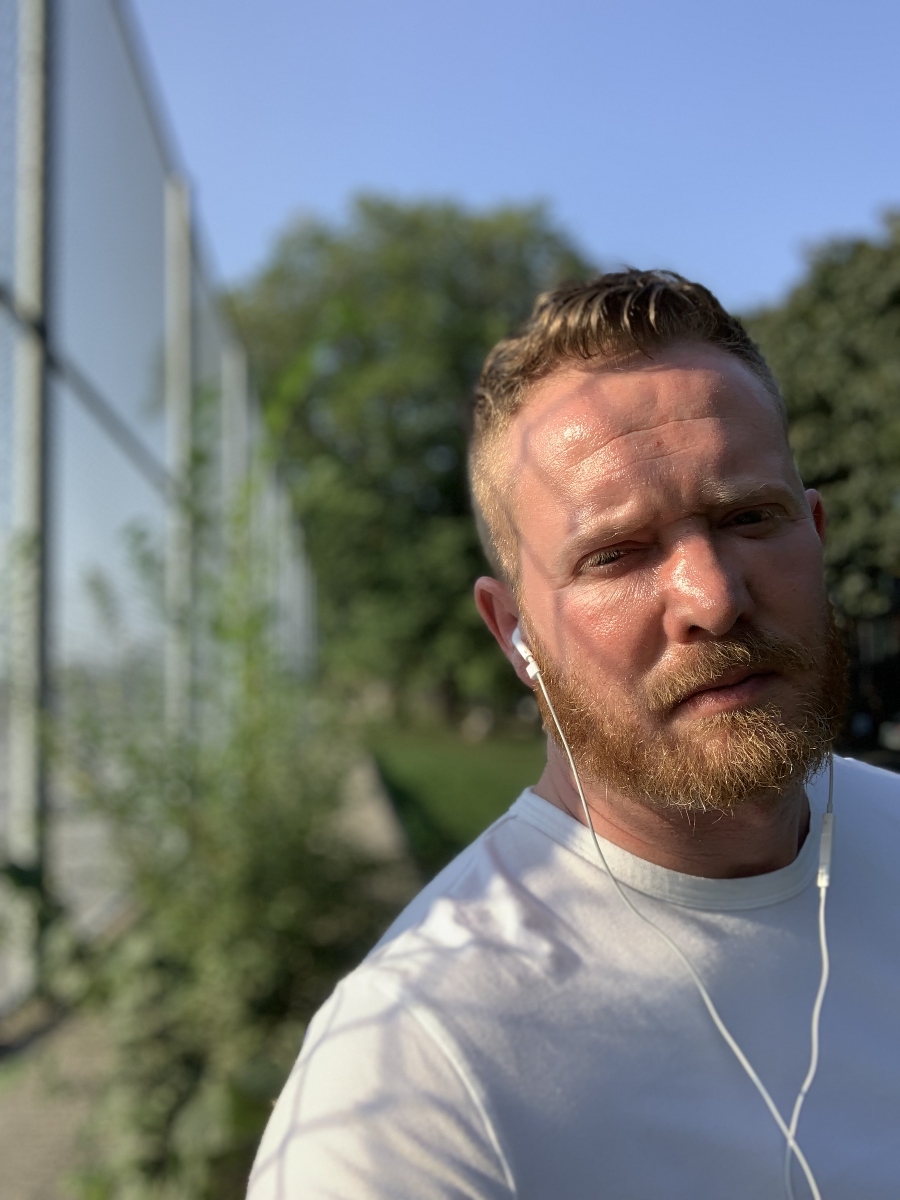
Below the Line: What was your homework in terms of the production design of this series?
Matthew Davies: I was actually very privileged because so much of the prep work had been done for me by our incredible writer/producer Sheri Fink, who spent about five years just researching the events around Katrina. She had done hundreds of interviews that were made available to us with about 3,000 individual documents that she provided. It was quite a deal just collating all the information, organizing it all, and trying to reconstruct exactly what went down over the five-day period at Memorial Hospital, relating everything to the imagery and documents. It was an incredible glimpse into what really went down.
BTL: How challenging was the realism and how much did you have to be true to that?
Davies: Inevitably, everything has to be interpreted in some fashion to make it adaptable to the climates of shooting. You read the script, you look at the choreography, how the actors engage with one another in the spaces, and that informs the design process. But ultimately, it had to be real. It had to marry to the tone, the feel, [and] the aesthetic of the hospital.
BTL: What can you tell me about designing the hospital set and surrounding areas?
Davies: That hospital was a construct that we built to mimic the geography and architecture of what was Memorial Hospital, but which has since become Ochsner Baptist Medical Center. If you go on Google and you see it, it’s almost exactly as we depicted it from the configuration of all the buildings and the helipad on the roof and the Clara Street bridge and how it leads to Napolean Avenue and all the architecture of the neighborhood surrounding it.
I should also mention [Art Director] Chris Stull, who was my collaborator down in New Orleans. He actually delivered some fantastic sets down there.
For the helipad, we had to rebuild that in the fields because it was 15,000 square feet alone. We built one facade of the hospital and we had to design it so there was a bluescreen wrap. It all had to be fully accessible with stairs to the helipad, which we built as a separate element. All of that was faithfully recreated in the show. I remember that when Sheri Fink came to the set, she was in tears as she was moved by the incredible lengths we’d gone to faithfully recreate what was then her research.
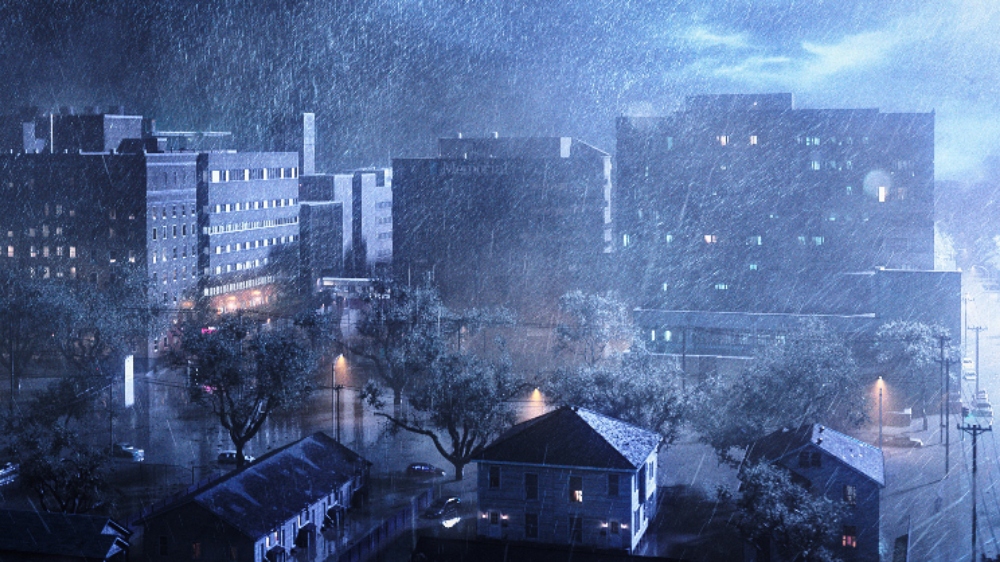
BTL: It seems that your background in architecture also came in handy, right?
Davies: Yes! I mean, I love all architectural periods and I love doing historical recreations, which is one of my strengths. I really tried to lean into the design resource of what Memorial Hospital might look like if it was designed in the mid-’80s, and how with successful renovations it may have come to look, and [I] tried to suggest the depth and the expanse of that interior and what it was like to navigate through that place in the dark. Hospitals are not created to be habitable without electricity and that was a big factor.
We had a stage space that was about 120,000 square feet in size and we pretty much filled it. The main hospital interior build of three floors of the hospital was well over 30,000 square feet. It was a huge set to build but it was all about the flow of people from one point of crisis to the helipad or to the ambulance ramp to escape by boat. It was paramount to show the distance that they have to travel with these incredibly delicate patients and what an ordeal it was for everybody.
BTL: What about the deterioration that ultimately fell upon Memorial Hospital?
Davies: It had to be very truthful in terms of how we were depicting this deterioration within the hospital over the five days. We were essentially making a story about real people that are alive today and it was immensely important to everyone, not least to [Executive Producers] Carlton [Cuse] and John Ridley, our phenomenal showrunners, to actually portray everything with a strong degree of realism.
What was incredible was just how quickly things fell apart in the hospital. Initially, when they lost power, they went to backup generators, and then when the levees breached and the bowl of New Orleans filled with water, that then affected all the fuses and switches within the hospital in the basement, and the turbines had a reaction. At that point, they lost all power, so they had 2,000 people sheltering in the hospital, including the public and patients. It ceased to be a hospital. It was an overheated building and I believe temperatures climbed to 110 degrees in the hospital with no working ventilators or life support for the patients.
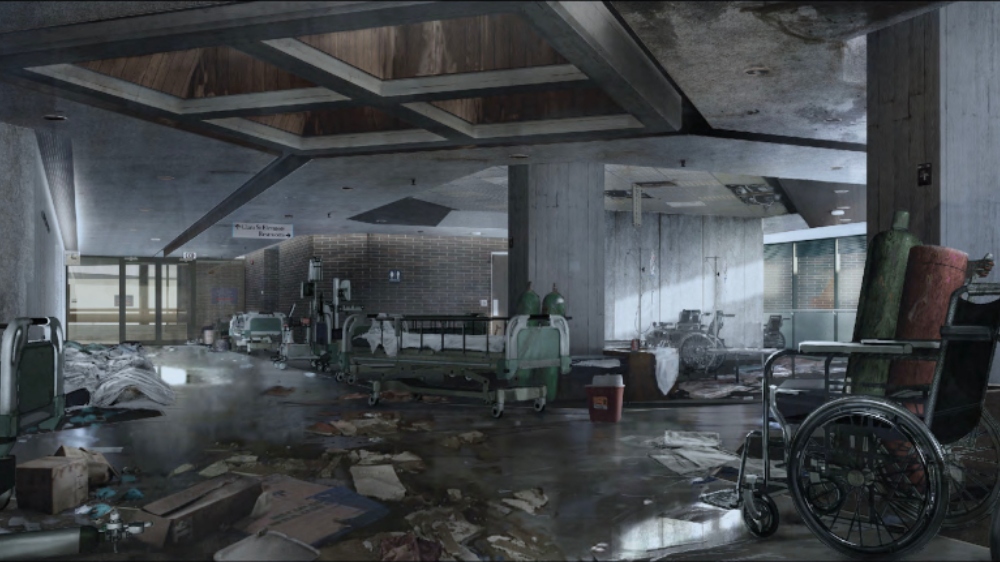
BTL: Can you describe how you designed the deterioration of the hospital?
Davies: The level of care they could provide was drastically compromised and so trying to really chart the exact time and rate [at] which everything fell apart was very important in the storytelling. The first five episodes are essentially the first five days during and after the storm. We had a very tight timeline and went back to Sheri repeatedly just to clarify what they [used] for lighting in the hospital, and fortunately, she was the font for all information with photos and with dates so we could look at things and really piece together in a very authentic way what had transpired at the hospital.
That incredible heat created this explosive sort of mold growth and [the hospital] became this incredibly humid environment, so they were smashing windows to combat the harsh reality they were stuck in. There were five stages of deterioration from Day 1. By Day 5, amidst the aftermath and a month later, the dropped ceilings had largely collapsed, which was fun for the scenic department led by Clinton Guitard.
BTL: One thing television hasn’t tackled yet, for obvious reasons, is the smell inside that hospital. Was that something the cast and crew had to think about during production?
Davies: It was very important in the storytelling to describe everything from a very human and individual perspective. We weren’t trying to create a disaster show. We wanted to show these individuals who had made the brave choice [to] stick around and do their best in the worst of situations, [and] show how exhausting and how many obstacles were placed in the path of the caregivers during that crucial time.
Julie Ann Emery, who plays Diane Robichaux, gave this lovely interview about the design of the show and she said it motivated her and the other actors to walk onto those sets every day and see a greater state of hellish deterioration. Vera Farmiga (Dr. Anna Pou) and Cherry Jones (Susan Mulderick) said the same thing, [that] to be on a set that was a full 360-degree environment, they felt [like] they were really there in the moment. That was very rewarding to the art department to hear that.
BTL: Would you say you designed the hospital floor by floor?
Davies: The geography of the hospital was very important. [There were] patients on the seventh floor in Life Care [and] on the eighth floor in the intensive care unit, [and there was a question of] how they were going to get to the helipad. So we were married to that journey that everyone took from the hospital to escape this desperate situation. It was important to tell that in a true and faithful fashion in the way that we approached the design.
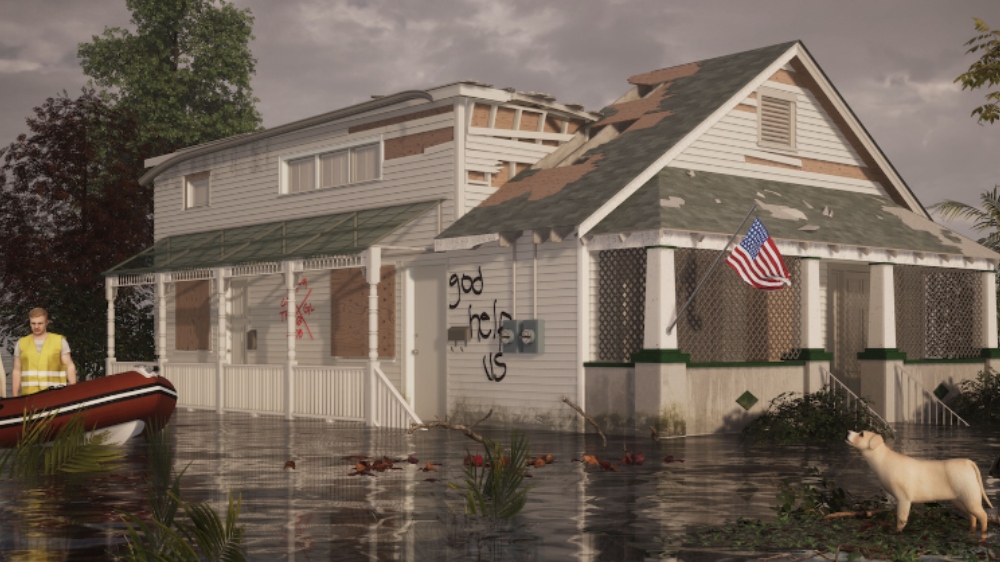
BTL: How long did it take to build sets of that scale and how did they interface with the flooding of Hurricane Katrina?
Davies: When I started, Libby Minarik, who was the U.S. first AD working on the show, and I sat down and we had to unpack the entire schedule of what we could deliver and when. A lot of the sets were designed to be flooded. It’s very hard to tell a story when you have a lot of water at play. I understand other producers had tried to tell the story in the past and they had been flummoxed by the complexity of working with sets of that scale and the water component and what it would mean in terms of visual effects vs. practical builds. So we ended up building a large portion of the show in huge tanks because we could flood them, we could play with the water levels, [and] we could pretty much mirror the reality of what existed around Memorial Hospital.
Our biggest tank we built was over 27,000 square feet and held over a million gallons [of water]. Our exterior lots covered several acres. We had to recreate portions of destroying New Orleans and drop all the elements into tanks and shoot them and then create a place to composite everything back together. It was a difficult and interesting and kind of thrilling exercise to go through to really break it down into shootable elements. We took on a site that was a former glass factory and we stood the tank on the foundations of that demolished factory because the sheer volume and weight of that water was a big consideration and how to build that tank.
BTL: How did you recreate the actual footage of the flooding by Hurricane Katrina?
Davies: A lot of what people might think in the show is actual news footage, a lot of that we had to create because it just didn’t exist. Television was a different aspect ratio back then and was formatted differently and not the same resolution as we wanted. Although you would expect that some of that would’ve been captured by the press and media at the time, it really wasn’t there. We couldn’t find it. There was a lot of archival news footage but it didn’t show anything. They couldn’t get close enough to really document it so we had to reconstruct those moments. I think so much of the world was shut out of New Orleans in the aftermath of Hurricane Katrina.
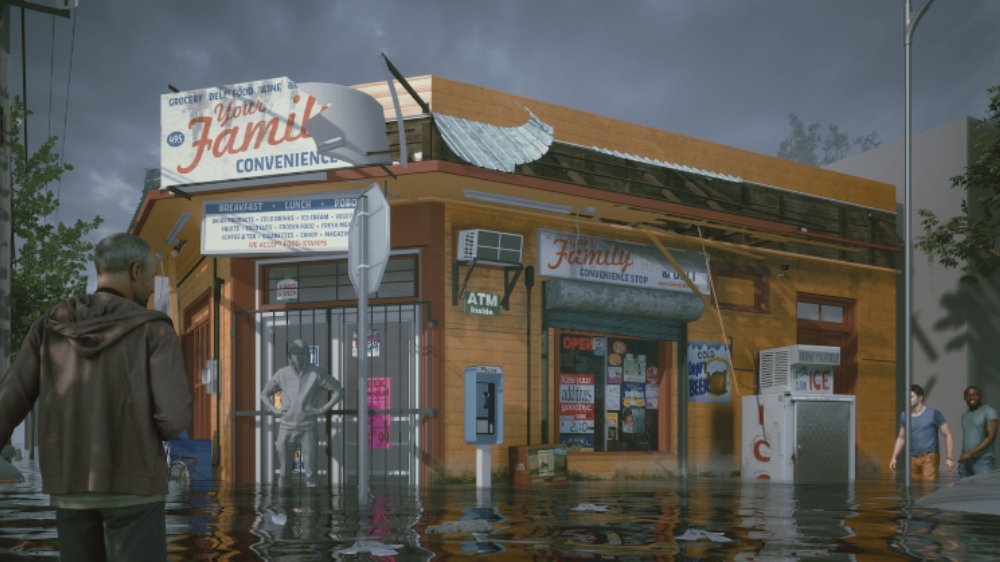
BTL: Did you have any feedback from the real people involved at Memorial Hospital in terms of how accurate your designs turned out to be?
Davies: I don’t think the people that work at Ochsner Baptist at the moment would have any trouble identifying where they are in the story. Specifics like the second-floor mustering station where they gathered a lot of the patients, the geography of where the chapel sat relative [to] where the first bodies were found; everything was recreated authentic to the original hospital. That was a real achievement because we didn’t have access to the hospital, being set up in Toronto. We weren’t going to knock [on] their door and ask for their help given the nature of what we were trying to show.
There were a lot of very sensitive political and legal issues with depicting real characters and real companies that were somewhat complicit in a terrible situation, so we had to be very mindful and respectful of those individuals. What we realized, and Sheri realized, is [that] it’s very hard to lay blame at the feet of people for doing their absolute best [to] give the best quality of care in the absence of any support — without electricity [or] working equipment, and in the harshest of environments that everybody found themselves in after Katrina.
BTL: What was going through your head when it all came together?
Davies: You never see a film like this come together until you get to see it all. Matt Whelan and Eric Durst, who were our VFX Supervisors, were phenomenally helpful and supportive. We wanted to make sure we weren’t overbuilding, but doing justice to the story that was taking place on a massive scale. It takes a very rugged and resilient team to deliver a show like this. Our construction coordinator, Kevin McCullagh, and [his] crew worked through [intense] heat and a very harsh Canadian summer to build all of these sets. I’m very proud that we managed to recreate Memorial Hospital in a very authentic fashion.
Five Days at Memorial is now streaming in its entirety on Apple TV+.





